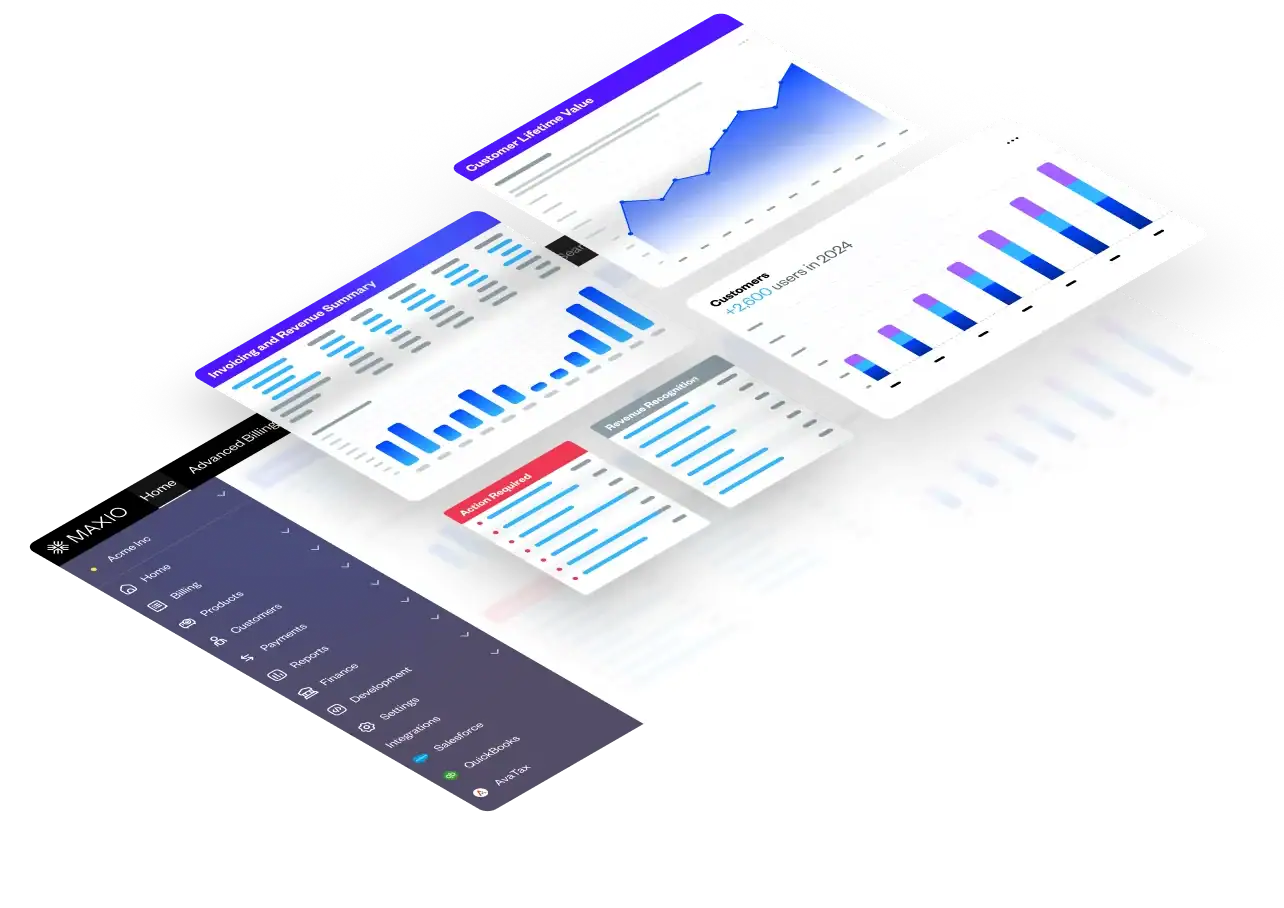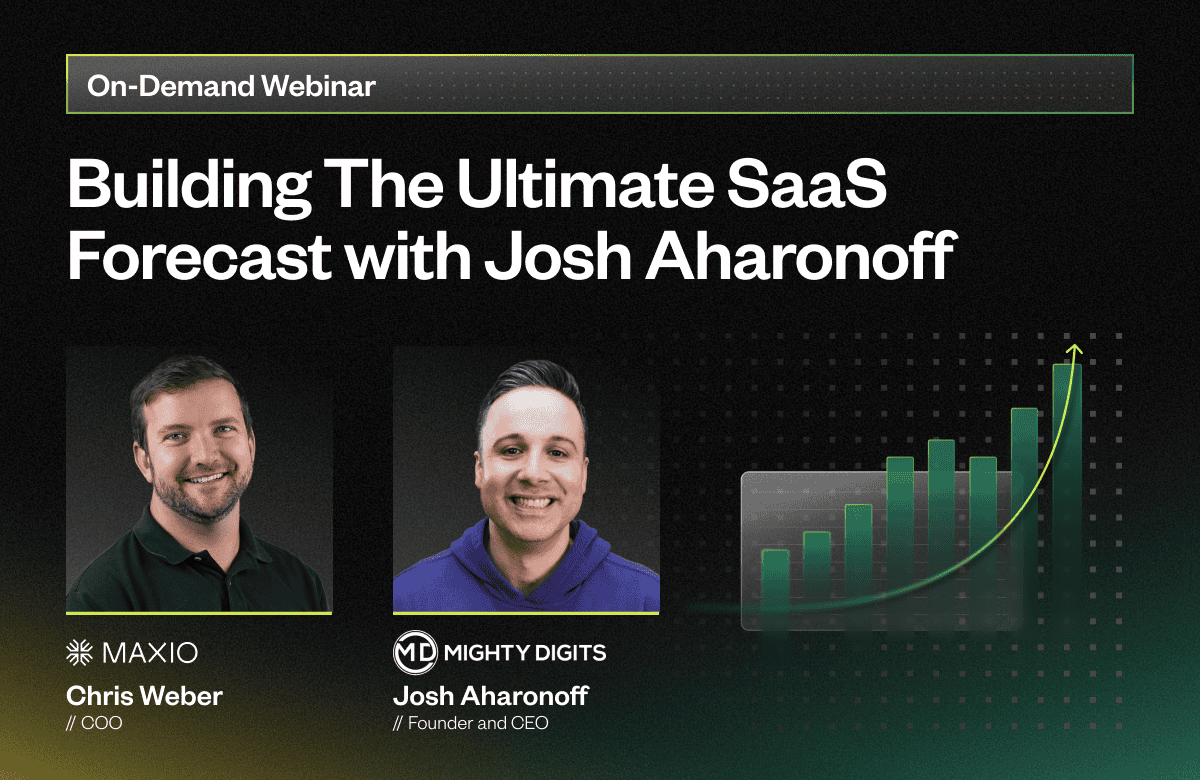On-demand Webinar
Building The Ultimate SaaS Forecast with Josh Aharonoff
Are you confident in your non-GAAP forecasts? If not, you’re not alone. Forecasting is one of the most difficult exercises in SaaS, but it is crucial to get right.
Josh Aharonoff, founder of Mighty Digits and Your CFO Guy, joined Maxio to demystify SaaS metric forecasting. While working as a fractional CFO in SaaS, Josh has provided guidance to thousands of finance professionals. His expertise on forecasting will help lay the ground work for finance teams looking for best practices.
Watch on-demand:
Key Takeaways
1) Build forecasts on reliable systems, not fragile spreadsheets
If you are past the early stage, pipe in GL, balance sheet, headcount, CRM, and contract data so your model mirrors how revenue really happens.
“Truly an accurate forecast starts with accurate contract data.”
Takeaway: Stand up subscription or contract management integrated with your CRM and HRIS once you approach a few dozen customers. Accuracy compounds when the inputs are source-of-truth.
2) Add a fourth statement for SaaS metrics
Treat ARR, MRR, counts, churn, and cohorts as a first-class tab that drives and explains the three statements.
“Have a four statement that’s like a first party citizen to your modeling and your forecasting.”
Takeaway: Make a SaaS metrics statement part of the model so board and exec reviews connect operating motion to GAAP outcomes.
3) Build revenue in three lanes
Model existing customers, pipeline weighted by close likelihood and stage, and new logos driven by channel inputs.
“When you have a long sales cycle, you need to actually track each and every single one of those deals.”
“Design inputs that result in outputs.”
Takeaway: Tie pipeline to probabilities and new logo growth to channels, conversion, and capacity so you can adjust assumptions with budget vs actuals.
4) Let the balance sheet do the math
Use a simple pattern for every account to derive cash flows and keep statements tied.
“I like to call this the base framework.”
“If you do that equation for every balance sheet account except for cash. You get your three statement model, you get your statement of cash flows.”
Takeaway: For each balance sheet line, start with beginning balance, add additions, subtract subtractions. Cash then falls out cleanly.
5) Treat deferred revenue as the quality check
Schedule future invoices, layer renewals and expansions, and reconcile to revenue recognition.
“Deferred revenue is probably the most challenging aspect of actually managing a SaaS business’ books.”
“Focus first on really just showcasing how the existing deferred revenue balance as of your last month of actuals will eventually go down to zero.”
Takeaway: Build a deferred revenue waterfall from contracts, then link AR, DSO, and cash timing to forecast collection.
6) Model headcount first, then the rest of Opex
Import the current roster, then plan hires by date, comp, and department.
“Nine times outta 10 is gonna be your most expensive line item.”
Takeaway: Person-level modeling for people costs, simple drivers for the rest. Most non-people Opex can scale with revenue, headcount, or historical averages.
7) Separate GAAP revenue from ARR and MRR
Use ARR and MRR to proxy momentum, not to replace recognition rules.
“It’s a proxy and an estimate for your revenue.”
Takeaway: Publish clear metric definitions for ARR, MRR, churn, LTV, CAC. Keep a metrics policy and be ready to map non-GAAP to GAAP during diligence.
8) Use cohort views for retention and LTV
Vintage analysis exposes where retention is improving or slipping and where CAC pays back.
“I think it’s really important to do a cohort or a vintage base analysis.”
Takeaway: Slice churn and expansion by vintage and ICP. When possible, compute LTV on gross margin for a truer CAC comparison.


